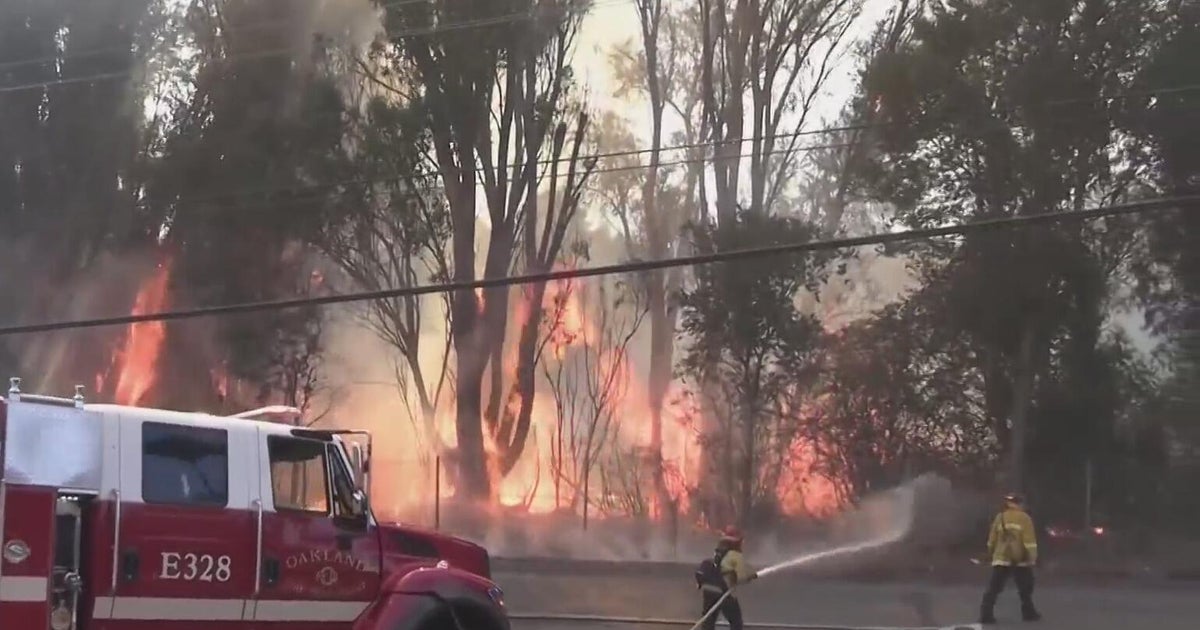Elevated levels of heavy metals found in Elkhorn Slough following Northern California lithium battery facility fire
Elevated concentrations of heavy metals have been detected at the Elkhorn Slough Reserve by scientists from San Jose State University's Moss Landing Marine Laboratories following a recent fire at Vistra Moss Landing Power Plant and Energy Storage Facility.
The plant is one of the world's largest lithium-ion battery storage facilities.
The fire at the Moss Landing Vistra Power Plant, located about 90 miles south of San Francisco, broke out on January 16 in the afternoon, escalating in the early evening to the point where the incident triggered evacuations for about 1,200 Monterey County residents in the area and shut down a section of Highway 1 in both directions.
One supervisor described the fire as a "Three Mile Island" event for the emerging lithium-ion battery industry. Last Tuesday, Monterey County supervisors declared a state of emergency in response to the Moss Landing fire.
As part of long-term monitoring at the slough, the scientists analyzed soil samples shortly after the Jan. 16 fire. Environmental concerns had been raised about the fire and its proximity to the sensitive wetlands area.
"We have been monitoring the area adjacent to the power plant for many years," said Professor Ivano Aiello, Chair of the Moss Landing Marine Laboratories, affiliated with San Jose State University. "So we have baseline data. And after the incident, I went immediately back to my field sites."
The university said Monday that field surveys, conducted within a radius of approximately two miles from the power plant, measured a dramatic increase in marsh soil surface concentration of three heavy metals: nickel, manganese and cobalt. This dramatic increase relates to both the shallow subsurface and the baseline measurements conducted in the area before the fire, according to the university.
Analysis revealed that the metals, found as nanoparticles ranging from 1 to 20 microns in size, are components of cathode materials used in lithium-ion batteries, linking their presence to airborne emissions from the fire. According to a university press release, these metals may chemically transform as they spread, potentially impacting ecosystems and food webs.
A treasure of central coast ecology, it hosts an abundance of bird and marine life, including a local population of 130 sea otters, which, on the day of the accident, were in the estuary munching on clams and sea worms.
And it's not only otters.
"A lot of flatfish like halibut, flounder, and sand dabs are in the slough. We also have a lot of surf perch in here," said Joe Mancino, operator of one of the few businesses that hasn't closed its doors in Moss Landing.
He has been the proprietor of Elkhorn Slough Safari for nearly a decade.
"A lot of open ocean fish will also wander in here to lay their eggs in our eelgrass beds, using them as a nursery," he told KPIX.
But nothing appears to have sickened and died yet.
Jessica Fujii is the Sea Otter Program Manager at the Monterey Bay Aquarium, 18 miles south of the plant.
"In the short term, we haven't seen any immediate changes. We respond to stranded sea otters, and we haven't yet seen any increase in the areas where the fire occurred," she said.
"Elkhorn Slough hosts a tremendous diversity of plant and animal life and has been designated a Globally Important Bird Area by the National Audubon Society and the American Birding Conservancy," according to the Nature Conservancy.
The conservancy first purchased the wetlands for conservation in 1971, transferring 750 acres to the Elkhorn Slough Foundation in 2012 for continued management.
Dr. Aiello said it was important to understand ecological risks associated with battery technology, given the growing need for large-scale energy storage. His team will continue monitoring affected soils and waterways.
"These findings and the research that follows are crucial not only to the impacted community but to the national and international community because of the need to store more power and thus build more and larger battery storage facilities," said Dr. Aiello, who is a marine geology professor and department chair at MLML. "This is a new and fast-growing technology, and we must understand the ecological impacts in the event that accidents like this happen again."
Assemblymember Dawn Addis D-Morro Bay, responded to the finding in a public statement Monday.
"I am alarmed and deeply concerned to hear the high concentrations of heavy metals have been identified within one of our most cherished and fragile ecosystems, Elkhorn Slough and its surrounding areas," said Addis. "These concentrations are directly linked to the battery energy storage fire. This is why I stand firm in my call for independent investigations by the CPUC and expect all environmental data to be taken into consideration."
Also on Monday, the California Public Utilities Commission proposed new standards for battery energy storage facilities in the wake of the Moss Landing incident.
In a statement issued on Monday, the CPUC said also said it has deployed its Safety and Enforcement Division to the Moss Landing site last Wednesday to investigate the fire. If the commission votes to approve the proposal at its March 13 meeting, it will set new standards for the maintenance and operation of battery facilities and increase oversight over emergency response action plans, according to the CPUC.



